21. 生活環境汚染をみずから視覚化するための予備的ワークショップを開催(下に日本語記事あり)
I’m Dr. Wutyi Naing, the Burmese pos-doc researcher of the Center for African Area Studies, Kyoto University (CAAS).
We organized a preliminary workshop for self-visualization of fecal contamination in the living environment in Chawama ward, Lusaka for two days (from 30 September to 1 October 2024). It took 4 hours in the first day and 3 hours in the second day. Eleven local participants joined the workshop.
In the first day of the workshop, the activities included sharing WASH knowledge, sampling methods and sample treatment principle by the facilitator, discussion on the ranking of important media of fecal contamination around the living environment by participants’ expectation, visiting to the random households to take the samples, culturing bacteria by the participants, and incubating the samples at University of Zambia for 24 hrs. The participants enjoyed and were active to cultivate the bacteria by themselves. In the second day, the participants counted the number of colonies from their samples and the concentration was calculated by an excel sheet together with the facilitators. Although the participants ranked hand, food, tap water and toilet floor as a top media for the fecal contamination in the first day, after visualizing the results, the idea of important media ranking on fecal contamination by the participants was changed. They realized that their toilet floor, stagnant water, cup and kitchen floor were heavily contaminated. After seeing the cleanness/dirtiness of their living environment by their own observation, they become motivate to discuss the countermeasures to reduce diarrheal risk were also discussed and the participants pointed 12 countermeasures in this workshop. Moreover, they expressed that they wanted to try more environmental samples and would like to participate in the next activities like this workshop.
We have got put our best food forward to achieve our objective to motive local community to actively involve in WASH development through this preliminary workshop. Because of the active participation and expression of great interest from the participants, our team also motived to have more similar activities and to improve self-visualization method as said by the positive feedback from the participants after the workshop.
みなさん、こんにちは、京都大学アフリカ地域研究資料センターで、ポスドク研究員を務めますビルマ人のウティ・ナインと申します。
今回は、ルサカ市チャワマ地区において、11人(地元青年団メンバー、ルサカ市の職員、ルサカ市水衛生公社社員など)の現地参加者を集め、彼らの生活環境における糞便汚染を、彼ら自身がみずから視覚化するための予備的なワークショップを、二日にわたって(初日4時間、二日目3時間)開催しました。
初日には、先ず日本側ファシリテーターから、WASHに関する知識、サンプルの採取方法、サンプルの取り扱いルールについて座学を行い、自らの生活環境における糞便汚染のカギを握る媒体が何なのか、参加者が媒体のランキングを作成しました。その後、参加者たちは自ら実際に、同地域の世帯を訪問してサンプルを集め、そのサンプル中の大腸菌を見えるように培養する簡単な処理を、楽しみながら、積極的に行いました。
2日目は、24時間培養したサンプルを確認しました。シャーレ上でサンプルに含まれていた大腸菌が増殖した眼に見えるコロニー(※)となったサンプルも多くあり、住民たちは驚きと共に大いに感心してコロニーを観察していました。大腸菌のコロニーの数をみずから数え、ファシリテーターとともに大腸菌の濃度の数値をエクセルシートに集計していきました。
初日に参加者は、手、食べ物、蛇口から出る水、トイレの床を、糞便汚染のカギを握る媒体としてランクしていましたが、みずからの調査結果を見て、トイレの床、家で生活用水としてバケツに溜めている水、コップ、キッチンの床の方がより汚染されていたことを知った後には、直接口に入ったり触れたりするものだけでなく、生活環境を広く綺麗にすることが重要であると、その考えを変えました。彼ら自身の生活環境のうち、何がきれいで何が汚いのかを、彼ら自身の手で確かめたことで、下痢リスクを減らすために何をしたらいいのかという彼らの議論にも熱が入り、12個の対策が協議されました。参加者はもっと多くのサンプルを調査したい、今回のようなワークショップがあれば再度参加したいという意向を示しました。
今回の予備的なワークショップでは、こうした方法でWASHの向上に地域住民が積極的に参加するための動機づけが可能か、その初期的な確認をすることが目的でした。参加者たちは非常に積極的であり、真剣に実験し、熱心に議論し、自らの生活環境の汚染を見える化することに強い興味を示してくれたおかげで、私たち自身も、この方法を発展させ、「みずから見える化するメソッド」に磨きをかけたいと思えるようになりました。ありがとうございました!
※コロニーとは、微生物などが増殖してできる「集落」のことです。一般的に、細菌は小さ過ぎて肉眼では見えませんが、寒天培地などの栄養豊富な環境に置くと増殖して、人間の目でも見て識別できるかたまりを作ります。これがコロニーです。

京都大学アフリカ地域研究資料センター ポスドク研究員ウティ・ナイン
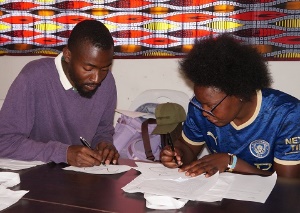
ワークショップ冒頭のアイスブレーキング・セッションで互いに互いを紹介しあう参加者/Icebreaking session by interviewing about your friends
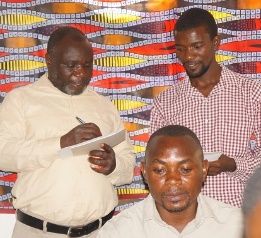
ワークショップ冒頭のアイスブレーキング・セッションで互いに互いを紹介しあう参加者/Icebreaking session by interviewing about your friends
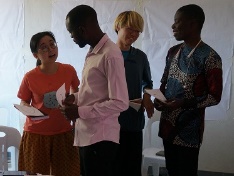
ワークショップ冒頭のアイスブレーキング・セッションで互いに互いを紹介しあう参加者/Icebreaking session by interviewing about your friends
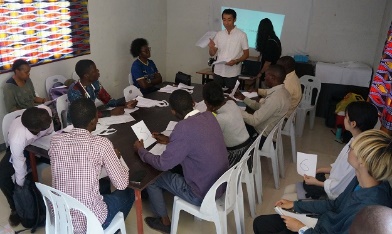
ファシリテーターの原田准教授による水・衛生となぜ汚染の可視化をするかの説明/Explaining what WASH means and why visualizing contamination is important by the facilitator/ Prof. Harada
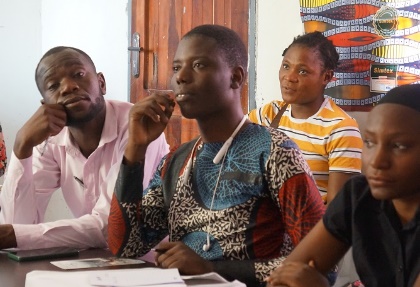
糞便で汚染され下痢を引き起こすカギを握る媒体について考えをめぐらす参加者/Discussion on the expected media, which is contaminated and causes diarrhea
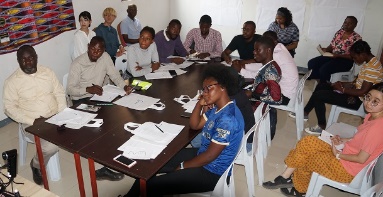
下痢を引き起こすカギを握る媒体についてランク付けする参加者/Discussion on ranking of the expected important media, which and causes diarrhea

ランキング作成中にファシリテーションをする原田准教授(中央)/Facilitation by Prof. Harada during the ranking by participants
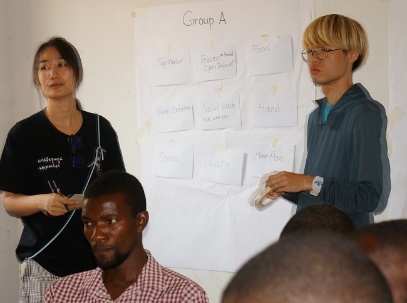
ファシリテーションを行うナイン研究員(左)と大学院生の吉田氏(右)Facilitation by Dr. Naing (left) and Mr. Yoshida (right)
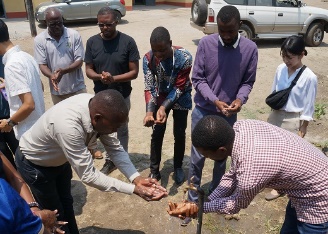
サンプル採取の前に手を洗う/Hand washing practice before going to sample collection
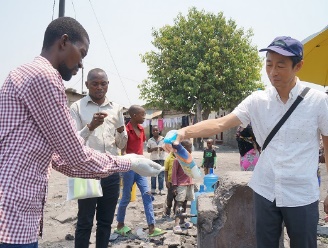
サンプル採取の前に手を消毒する/Hand disinfection practice during sampling collection
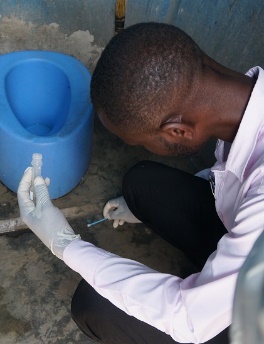
共同トイレの床からサンプルを採取する参加者/Taking a swab sample from toilet floor
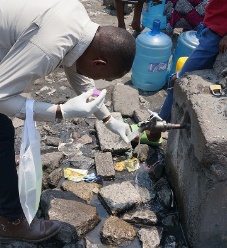
共同水栓からサンプルを採取する参加者/Taking a water sample from a shared public tap
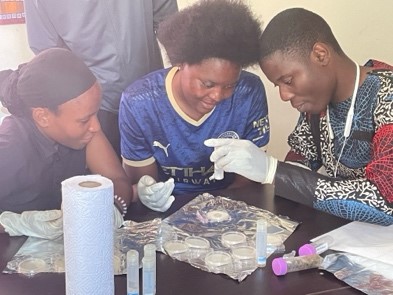
サンプルをみずから取り扱う参加者/Sample treatment by the participants
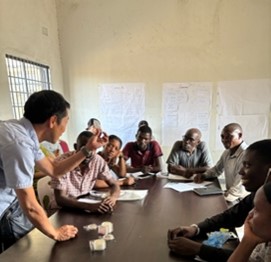
大腸菌コロニーの数え方を習得する参加者/Explaining how to count E. coli colony
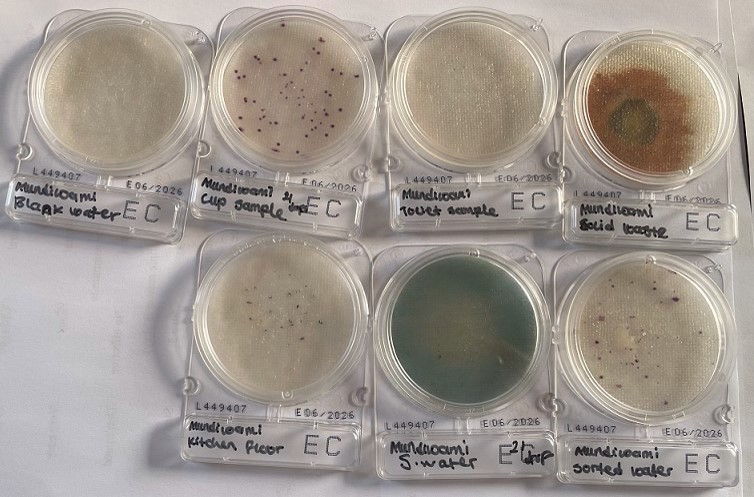
培養皿の中に増殖する細菌 / Bacteria growing in the dishes
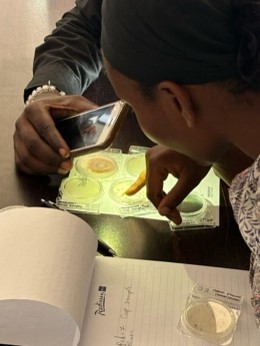
大腸菌コロニーの数を数える参加者/Colony counting by the participant
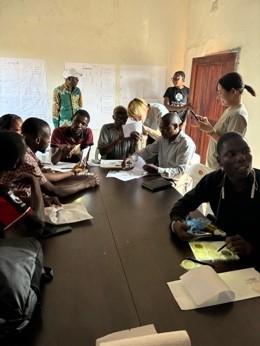
カウントした大腸菌コロニーの数を報告し濃度を計算する参加者/Reporting the colony number and calculating its concentration with the help of facilitator
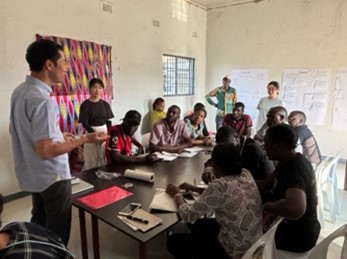
大腸菌を見える化した後、重要な媒体のランキングを付け直す参加者/Discussion on re-ranking the important media after visualizing the contamination

大腸菌による汚染を視覚化した後、やり直された重要な媒体のランキング/The rank of the important media after visualizing the contamination
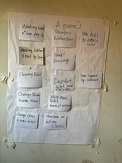
参加者がみずから提示した実践的対策/Practical countermeasures proposed by the participants
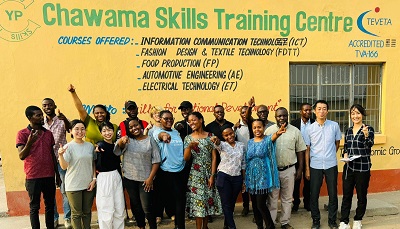
ワークショップ終了後の集合写真/Group photo
